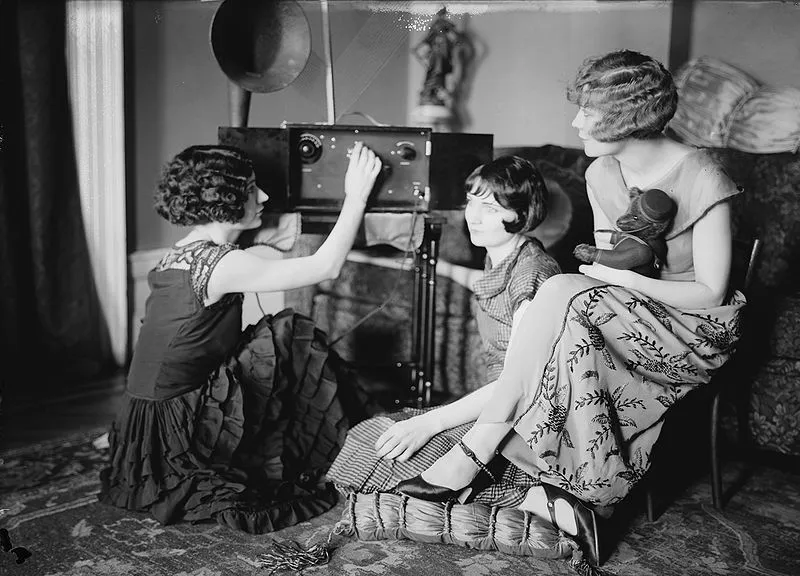Introduction
The 1920s, often referred to as the Roaring Twenties, was a decade of cultural transformation, economic prosperity, and social upheaval in the United States. It was a time of significant technological advancements, shifting social norms, and the emergence of new forms of entertainment that captivated the public’s imagination. From the rise of jazz music and the golden age of cinema to the explosion of radio and the popularity of sports, the 1920s witnessed a flourishing of creativity and innovation in the world of entertainment. In this article, we’ll explore some of the most popular forms of entertainment that defined the Roaring Twenties and left a lasting impact on American culture.
Jazz Music: The Soundtrack of the Roaring Twenties
One of the defining characteristics of the 1920s was the rise of jazz music, which became synonymous with the spirit of the era. Originating in African American communities in New Orleans, jazz music quickly spread across the country and captured the imagination of a generation. Characterized by syncopated rhythms, improvisation, and lively melodies, jazz music provided a soundtrack for the social and cultural revolution unfolding in cities like New York, Chicago, and Harlem.
During the 1920s, jazz clubs and speakeasies proliferated in urban centers, offering a vibrant nightlife scene where people of all backgrounds could come together to dance, socialize, and escape the constraints of prohibition-era America. Legendary jazz musicians such as Louis Armstrong, Duke Ellington, and Bessie Smith rose to prominence during this time, earning acclaim for their virtuosity and innovation. Jazz music not only transformed the American music landscape but also paved the way for future genres such as rock and roll and hip-hop.
Cinema: The Golden Age of Hollywood
The 1920s marked the golden age of Hollywood cinema, with the film industry experiencing unprecedented growth and innovation. Silent films dominated the era, with stars like Charlie Chaplin, Mary Pickford, and Rudolph Valentino captivating audiences with their performances. The advent of sound technology in the late 1920s revolutionized filmmaking, giving rise to “talkies” and ushering in a new era of cinematic storytelling.
Movie theaters, or “picture palaces,” became popular destinations for entertainment-seeking audiences, offering a glamorous escape from the realities of everyday life. Blockbuster films such as “The Jazz Singer” (1927), the first feature-length motion picture with synchronized dialogue, and “Wings” (1927), the winner of the first Academy Award for Best Picture, captivated audiences and solidified Hollywood’s reputation as the entertainment capital of the world.
Radio: The Voice of a Nation
The 1920s witnessed the widespread adoption of radio as a form of mass communication, transforming the way people consumed news, music, and entertainment. Radio broadcasting began in the early 1920s, with stations popping up in cities across the country and transmitting live music performances, news updates, and variety shows to millions of listeners.
Radio became a powerful medium for disseminating popular culture and shaping public opinion, with programs like “The Grand Ole Opry,” “Amos ‘n’ Andy,” and “The Voice of Firestone” capturing the hearts and minds of listeners nationwide. Families gathered around their radios in the evenings to listen to comedy sketches, serialized dramas, and live broadcasts of sporting events, forging a sense of national unity and shared experience.
Dance: The Age of the Flapper
The 1920s witnessed a revolution in social dance, with new styles such as the Charleston, the Foxtrot, and the Lindy Hop taking dance halls and ballrooms by storm. The era of the flapper, characterized by its liberated attitudes towards gender and sexuality, gave rise to a new culture of dance and nightlife that challenged traditional social norms.
Dance marathons, speakeasies, and cabarets became popular destinations for young people seeking excitement and adventure in the midst of prohibition-era America. The Charleston, with its fast-paced rhythms and energetic movements, became a symbol of the Roaring Twenties and a favorite pastime of the era’s youth.
Sports: Heroes of the Gridiron and the Diamond
Sports played a significant role in shaping popular culture in the 1920s, with icons such as Babe Ruth, Jack Dempsey, and Red Grange captivating audiences with their athletic prowess and larger-than-life personalities. Baseball, known as America’s pastime, experienced a surge in popularity during this time, with stars like Babe Ruth smashing home run records and leading the New York Yankees to multiple World Series victories.
Boxing also enjoyed widespread popularity in the 1920s, with heavyweight champion Jack Dempsey becoming a national hero and cultural icon. His legendary bouts against opponents such as Gene Tunney and Georges Carpentier drew massive crowds and captured the imagination of sports fans across the country.
Conclusion
The 1920s was a decade of cultural dynamism and innovation, with new forms of entertainment emerging to reflect the changing attitudes and aspirations of American society. From the vibrant rhythms of jazz music to the glitz and glamour of Hollywood cinema, the Roaring Twenties provided a wealth of entertainment options that captivated audiences and defined the spirit of the era. As we look back on this transformative period in American history, it’s clear that the cultural legacy of the 1920s continues to resonate and inspire new generations of artists, musicians, filmmakers, and performers.







